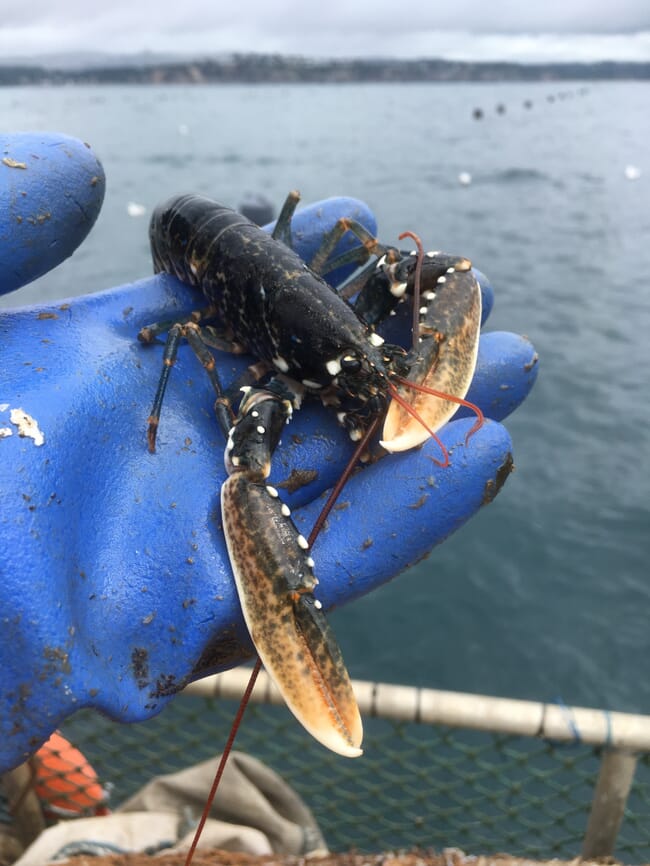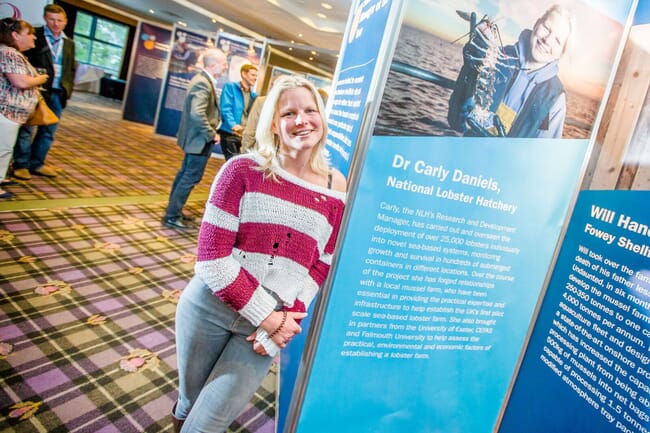The National Lobster Hatchery has been growing these lobsters for up to three years in specialist systems and is now looking for financial assistance to allow them to be released in key areas in southwest England in order to bolster wild lobster stocks and the livelihoods of the local lobster fishermen.
Over the last 20 years the Cornish charity has released over 250,000 inch-long lobsters from its hatchery back into the wild, to help conserve vulnerable populations. However, following the successful completion of the Lobster Grower 2 project, the NLH now also has thousands of larger lobsters, which have been carefully nurtured by NLH staff in environmentally-enriched sea-based refuges.

© National Lobster Hatchery
The LG2 project was globally recognised as leading the field in sea-based lobster aquaculture and during its three-year duration was the largest lobster research project in Europe. Following a further seven months growing period at sea, post the completion of LG2, additional funds are now needed for these lobsters to be released.
The lobsters, which are roughly the size of a human hand are ready to start their journey into the wild. The sea-based systems they were reared in has provided a transitional step between the hatchery and the wild, producing larger, fitter, healthier lobsters than can be produced under hatchery conditions and will therefore have a brilliant chance of survival following release. Releasing Larry is the start of a new research strand for the NLH as these lobsters will feed vital information towards longer term monitoring studies that will help quantify the impacts of NLH stock enhancement and will further inform release strategies and provide empirical support for this conservation work across the UK and Europe.
The NLH need to raise £40,000, which will go directly towards the costs of retrieving and releasing the lobsters. These costs include:
- The hiring of specialised vessels which are capable of hauling and handling the sea-based systems used to grow the lobsters.
- Employing qualified sea-going crew with technical expertise to remove lobsters from the containers at sea, undertake scientific data collection to inform release strategies and preparing the lobsters for transportation to the release sites.
- The costs associated with transportation of the lobsters to release sites across Cornwall and the Isles of Scilly.
- The cleaning and recycling of the sea-based systems so that they can be re-used in the future.
Dr Carly Daniels, head of production, science and development at NLH, remarked: “With the public’s help, we can ensure these charismatic crustaceans have the best chance of survival and are returned to the wild to help support the sustainability of their natural populations”.

Trevor Broome, chief operating officer, added: “By donating just £30, approximately the price of ordering a lobster in a restaurant, you will be doing your bit by putting a 2-year-old lobster back into the wild. Supporting sustainability of the natural stocks is of vital importance for future generations especially in the supporting of livelihoods in vulnerable coastal communities and any donations, however small, will go directly towards this mission.”
LG2 has also made significant advances into potentially establishing a commercial lobster aquaculture industry, although this side of the project still requires some fine tuning.
As LG2 project manager Jake Scolding explains to The Fish Site: “At the moment we’re focusing on the stock enhancement side of the project. Lobster Grower 2 highlighted some key factors which need improving before the commercial production and sale of lobsters becomes viable. The NLH will be seeking funding in the next few years to focus on these factors and try and improve the economic viability of lobster aquaculture.”
The NLH are offering a variety of rewards for donations to the Releasing Larry campaign. These include a "virtual lobsters kiss" for a £10 donation and the release of a 3-year-old lobster for a £50 donation. For exceptionally big donations, the NLH is offering some truly unique rewards, including the chance to learn how to grow lobsters yourself by shadowing a hatchery technician as well as attending a juvenile lobster release with the NLH research team.
For further information on the project or to make a donation visit www.crowdfunder.co.uk/releasinglarry.

